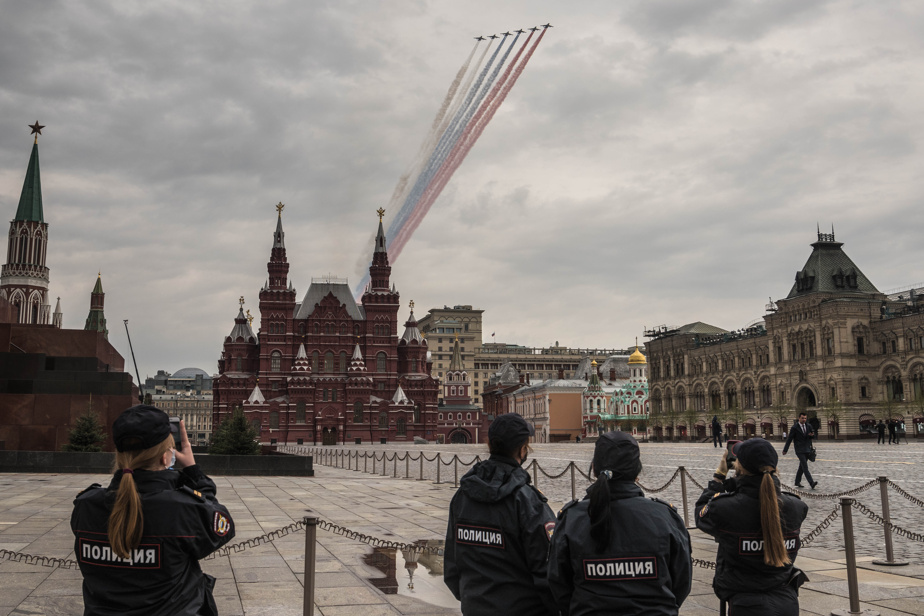(Washington) For more than a year, Ukrainian air defenses, reinforced with Western weapons, have kept Russian planes at bay.
But without a massive influx of munitions, Ukraine’s entire air defense network, weakened by repeated barrages of Russian drones and missiles, could fracture, according to US officials and Pentagon documents reporting subject of a new leak, which would allow Russian President Vladimir Putin to unleash his deadly fighter jets in a way that could change the tide of the war.
In the early days of the invasion, Russian planes made hundreds of combat flights to bomb targets in Ukraine. But Ukrainian commanders’ quick-wittedness, poor intelligence and Russian pilots’ aiming errors have left much of Ukraine’s warplanes and air defenses intact, preventing Moscow from taking control of the skies in the above the battlefield and forcing Russia to keep much of its air force out of combat.
Today, Pentagon officials fear Moscow’s barrage of ranged attacks could deplete stockpiles of missiles used by Ukraine to defend itself. A Pentagon assessment, from late February and contained in leaked documents discovered online last week, paints an even bleaker picture.
Stockpiles of missiles for the Soviet-era S-300 and Buk air defense systems, which constitute 89% of Ukraine’s protection against most fighter jets and some bombers, should, according to these documents, be completely sold out between mid-April and May 3. The document, which was published on February 28, based this assessment on consumption rates at the time. It is not known if these rates have changed.
The same document estimates that Ukrainian air defenses designed to protect troops on the front line, where much Russian air power is concentrated, will be “completely reduced” by May 23, leading to tensions on the air defense network inside Ukrainian territory.
Senior Pentagon officials believe such a move would pose a major challenge for Ukraine, especially if Russian fighter jets and bombers are given the freedom to attack Ukrainian troop positions and critical artillery targets on the ground.
To strengthen Ukraine’s air defenses, the Biden administration announced last week that it would send additional air defense interceptors and munitions as part of a $2.6 billion aid package. , part of which will be used to help Kyiv prepare for a planned spring offensive against Russian troops. Will that be enough? According to officials, the answer to this question depends on a number of factors, including whether NATO allies make their own deliveries and whether Putin continues to refuse to risk his prized warplanes.
The downing of a US drone by a Russian fighter jet over the Black Sea last month has heightened fears that the Kremlin is looking for ways to use its air force in the war.
“The Russian military has been roughed up,” General Mark Milley, chairman of the US Joint Chiefs of Staff, said in an interview with MSNBC’s Morning Joe in February. “But the Russian Air Force was not. »
Indeed, an assessment in another leaked Pentagon document puts the number of Russian warplanes currently deployed in the Ukrainian theater at 485, compared to 85 for Ukrainian planes.
Many experts expected the Russian Air Force, with its backbone of next-generation MIGs and Sukhoi jets, to be a decisive factor in the early months of the war. But it was marginalized in the face of a much smaller Ukrainian force, due to Ukraine’s intact air defenses and Russian tactical and strategic blunders.
Ukraine reorganized its mobile surface-to-air missile batteries after the first three days of the war and shot down many Russian Su-34s and other attack aircraft last year.
His most valuable warplanes having been shot down, Putin withdrew them. For most of the war, these jets and ground-attack aircraft such as the Su-25 concentrated on sorties along the front lines, launching rockets at Ukrainian positions, as well as attacks long-range missiles launched from Russian or Belarusian territory.
“They made the choice not to sacrifice their knights for their pawns,” said Dara Massicot, senior policy researcher at the Rand Corp. “Instead, they will launch these mobilized troops without adequate air support, because it is a more abundant resource. »
Since those early days, Ukrainian air defenses have withstood an onslaught of Russian missiles and drones. But those systems, according to U.S. military officials and leaked documents, wear out quickly, which could allow Russian planes to cause serious damage.
Air defenses are layered, with different types of weapons designed to intercept aircraft and missiles flying at different altitudes – from low-flying helicopters to high-altitude bombers and cruise missiles. In Ukraine, these defensive weapons have also been used to target drones and cruise missiles when Ukrainian forces attempted to defend their cities against the Russian campaign targeting the country’s infrastructure.
They are like a tower of Jenga: once one piece is removed, the others are vulnerable. If Ukraine’s air defenses collapse or are significantly reduced, its ground forces, especially its artillery, will be immediately threatened. And if Ukraine is deprived of artillery – the backbone of the war effort – Russian forces will have the opportunity to make significant gains on the battlefield.
Yurii Ihnat, spokesman for the Ukrainian Air Force Command, did not deny that Ukraine was suffering from the depletion of its stockpiles of air defense munitions, but he said that the new systems delivered by Western partners could entirely replace what has been used.
“The question is numbers,” he said in a text message. “To completely replace them, we need many systems, and I won’t tell you how many.” »

